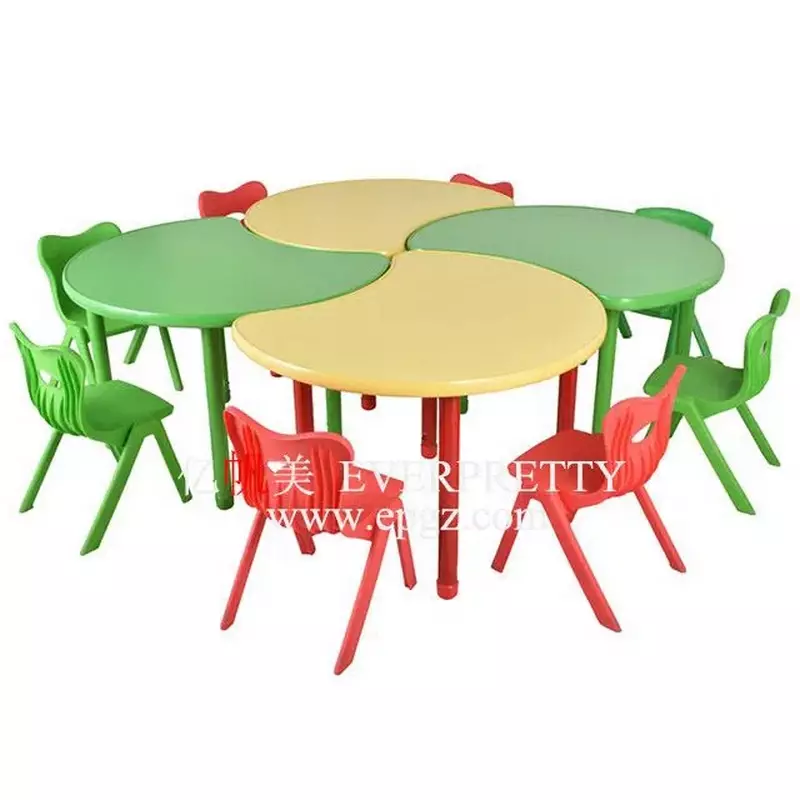Every educator knows that a well-designed space can greatly enhance learning experiences—yet how often do we hear about the challenges associated with inadequate kindergarten furniture? With many classrooms still using outdated items that do little to promote creativity and comfort, it’s crucial to understand the role that quality kindergarten furniture plays. In fact, studies suggest that children’s engagement is directly correlated with their physical environment, making proper furnishings an essential element of any learning strategy. So, what can be done to ensure we’re not shortchanging our youngest learners?

Identifying the Flaws of Traditional Solutions
When we think about traditional kindergarten furniture, we often picture bulky desks and chairs that were not designed with young children in mind. These outdated solutions lead to discomfort, lack of flexibility, and, ultimately, hindered learning opportunities. Research indicates that around 30% of children complain about discomfort in their seating arrangements, distracting them from participating fully in classroom activities. This raises a critical question: why are we still relying on furniture that doesn’t accommodate the needs of our children?
The Principles Behind Innovative Designs
New technologies in furniture design now prioritize ergonomics and adaptability. Designs that consider the physical development of children include adjustable chairs and lightweight tables, which promote dynamic learning environments. These forward-thinking principles not only enhance comfort but also stimulate interaction—a necessity in early childhood education. For instance, collaborative seating arrangements can encourage teamwork and social skills, making the classroom experience far more enriching.
Quantifying the Benefits for Users
The transition to modern kindergarten furniture does not merely represent an aesthetic upgrade; numerous studies highlight tangible benefits. Improved designs lead to reduced distractions, which has been quantified to enhance overall learning retention rates by as much as 20%. Moreover, educators report that classrooms furnished with adjustable and flexible designs promote a more engaged student body. With data like this at hand, it’s clear to see the connection between furniture choices and educational outcomes.
Conclusion: Evaluating Your Furniture Choices
When it comes to selecting the right kindergarten furniture, don’t just buy the first items you see. Always verify these three metrics when choosing solutions: ① Safety Standards (are the materials safe for children?), ② Ergonomics (does the furniture promote comfort and mobility?), and ③ Versatility (can the pieces adapt to different activities or spaces?). By focusing on these criteria, educators can create inspiring environments that foster learning and development.

Preschool Room Furniture: The Foundation of a Creative Learning Environment
The furniture in a preschool room plays a critical role in shaping the educational experiences of young learners. Most classrooms benefit from thoughtfully chosen preschool room furniture, which provides not just comfort but also safety and support for diverse activities. With adaptable options—like tables that can be arranged for group work or individual play—educators can better facilitate a range of learning styles. Look, it’s simpler than you think: the right furniture can turn a simple space into a thriving imaginative hub.
Continuing the Discussion on Preschool Room Furniture
When considering the impact of preschool room furniture on learning outcomes, it’s essential to acknowledge the role that aesthetic appeal plays as well. Bright colors, fun shapes, and playful designs can engage children’s imaginations while encouraging a sense of ownership over their learning environment. Moreover, investing in durable materials ensures that this essential furniture withstands the wear-and-tear of enthusiastic young users. By prioritizing these elements, we create a positive atmosphere conducive to exploration and growth.
In summary, quality kindergarten furniture is vital in creating spaces that not only host learning but enhance it. By addressing flaws in traditional designs, embracing innovative principles, and recognizing the quantifiable benefits, educators can make informed decisions about their classroom environments. When it comes to sourcing this crucial equipment, consider EVERPRETTY Furniture, a brand known for its exceptional supply advantages in kindergarten and preschool furnishings. Their products aim to blend safety, comfort, and functionality, ultimately supporting our most precious resource—our children—in their early educational journeys.